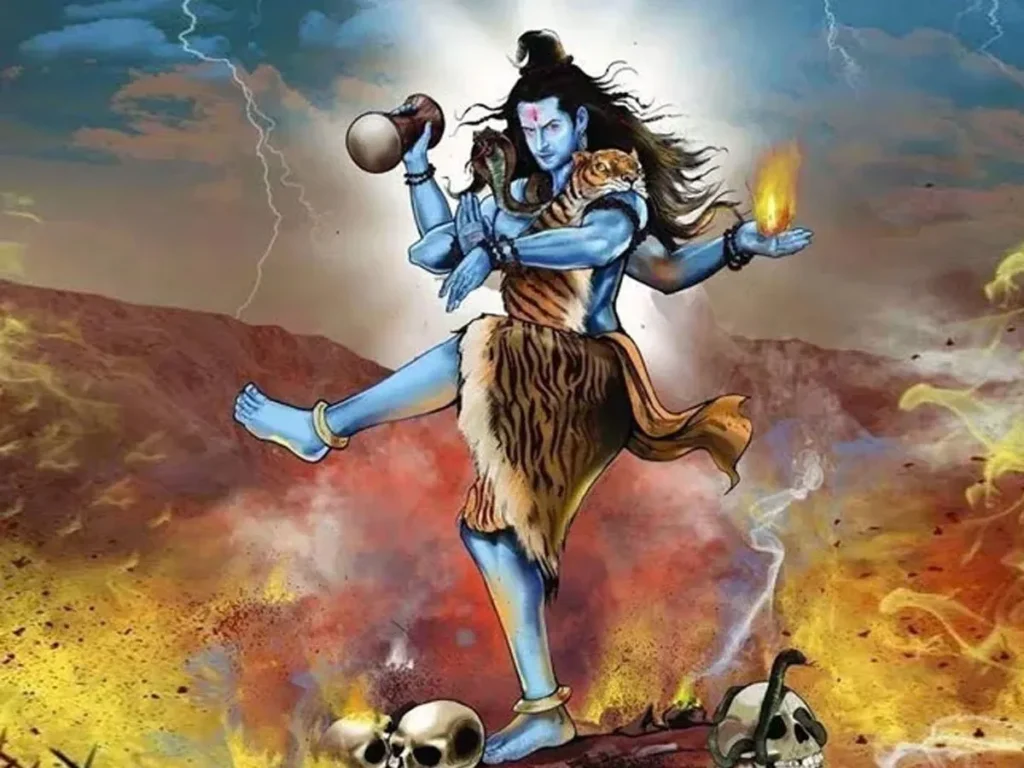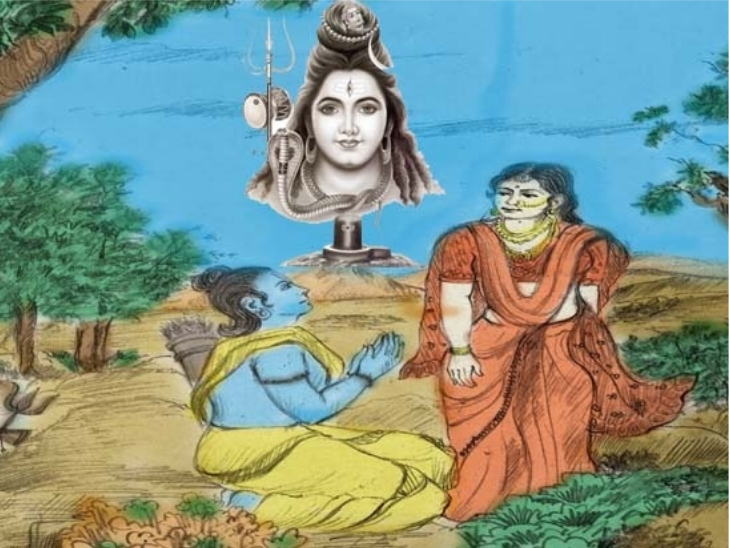The story of the 51 Shakti Peethas is one of the most powerful chapters in Hindu spirituality. These holy shrines, scattered across India and beyond, are dedicated to Maa Shakti, the Mother Goddess, worshipped in her many forms as Durga, Parvati, Sati, and Kali. For millions of devotees, visiting the Shakti Peethas is not just a pilgrimage but a spiritual journey into the very heart of divine energy.
Origin of the Shakti Peethas
The legend of the Shakti Peethas begins with Sati and Lord Shiva.
Sati, the daughter of King Daksha, married Shiva against her father’s wishes. During a grand yagya organized by Daksha, Sati was humiliated when her husband was insulted. Unable to bear the disrespect, she immolated herself in the fire of the yajna.
Grief-stricken, Shiva carried her lifeless body and wandered across the universe in deep sorrow. To calm him and to restore balance, Lord Vishnu released his Sudarshan Chakra, which cut Sati’s body into 51 parts. Wherever a part of her body fell, a Shakti Peetha was formed, sanctified as a powerful center of feminine energy.
Each Shakti Peetha is associated with a part of Sati’s body and a form of Shakti (the goddess) and Bhairava (her consort). Together, they symbolize the inseparable union of feminine and masculine energies.

Importance of Visiting the Shakti Peethas
- Spiritual Purification – Devotees believe visiting these shrines cleanses sins and brings divine blessings.
- Tantric Significance – Many Shakti Peethas are important centers for Tantric practices, highlighting the worship of Shakti as the ultimate energy.
- Cultural Connection – Spread across India, Nepal, Bangladesh, Sri Lanka, and even Pakistan, the Peethas connect diverse regions through devotion.
- Empowerment of Women – The Shakti Peethas emphasize the divine role of feminine power, celebrating womanhood as sacred.
The 51 Shakti Peethas – A Complete List
Below is a detailed list of the 51 Shakti Peethas, their locations, and the body part of Maa Sati that is believed to have fallen there.
- Kamakhya Temple (Assam) – Yoni
- Kalighat (West Bengal) – Right toe
- Tarapith (West Bengal) – Third eye
- Vimala Temple, Puri (Odisha) – Feet
- Jwala Ji (Himachal Pradesh) – Tongue
- Naina Devi (Himachal Pradesh) – Eyes
- Chandranath Temple Chittagong, Bangladesh – Right arm
- Biraja Devi (Odisha) – Navel
- Ambaji (Gujarat) – Heart
- Hinglaj Mata (Balochistan, Pakistan) – Head
- Shankari Devi (Sri Lanka) – Teeth
- Shriparvata, Andhra Pradesh – Chin
- Kangra (Himachal Pradesh) – Breast
- Mansa Devi, Haridwar (Uttarakhand) – Right palm
- Vaishno Devi (Jammu & Kashmir) – Head
- Mahamaya Shakti Peeth Bilaspur
- Katyayani Shakti Peeth Khagaria
- Lalita Devi Shakti Peeth Prayagraj
- Ramgiri Shakti Peeth Chitrakoot
- Panchsagar Shakti Peeth Varanasi
- Shri Parvat Shakti Peeth Ladakh
- Vishalakshi Temple Varanasi
- Taratarini Temple – Brahmapur, Odisha
- Kankalitala Temple – Birbhum, West Bengal
- Tripurmalini Shakti Peeth, Jalandhar
- Savitri Shakti Peeth, Kurukshetra, Haryana
- Patan Devi Shakti Peeth, Patna, Bihar
- Janasthan Shakti Peeth, Nashik
- Tripura Sundari Temple – Udaipur, Tripura
- Katyayani Shakti Peeth Vrindavan
- Karatal Shakti Peeth Nepal
- Jogulamba Shakti Peeth Alampur
- Saptashrungi Temple Nashik, Maharashtra
- Mahashira (Guhyeshwari) Kathmandu Nepal
- Shri Nartiang Durga Temple Meghalaya
- Mangala Temple Bihar
- Avanti Shakti Peeth Ujjain
- kalmadhav shakti peeth
- Prabhas shakti peeth
- Manibandh Shakti Peeth
- Mahalaxmi shakti peeths
- Bhramari shakti peeth
- Bhramaramba shakti peeth
- Kukkuteswara (Puruhutika)
- Chamundeshwari
- Shuchi / Narayani
- Kamakshi (Kamakoti)
- Kumari temple
- mithila shakti peeth nepal
- Jugadya shakti peeth
These 51 Peethas together form a network of divine energy centers, each representing a body part of Maa Sati, where devotees can experience spiritual power, blessings, and the transformative energy of the goddess.
Spiritual Significance
Visiting the Shakti Peethas is not only a pilgrimage; it is considered a journey to awaken the inner energy. According to spiritual texts:
- Each Peetha emits a distinct form of Shakti energy, which can purify, empower, and guide devotees.
- Tantric practices at specific Peethas focus on activating inner spiritual channels, leading to enlightenment.
- Devotees believe that visiting all Shakti Peethas at least once in a lifetime can bring spiritual liberation (moksha).
The Peethas are also powerful centers for women’s spiritual empowerment, as they honor the divine feminine and natural cycles of life.
How to Plan a Shakti Peetha Pilgrimage
1. Prioritize Nearby Peethas
Since these shrines are spread across India and neighboring countries, planning is essential. Pilgrims often start with nearby Peethas and gradually extend the journey over months or years.
2. Time Your Visit with Festivals
- Ambubachi Mela (Kamakhya Temple) – June
- Navaratri – Most Peethas celebrate with grandeur
- Specific regional festivals – Check local schedules
3. Travel Considerations
- Many Peethas are in hilly or remote areas. Comfortable footwear, water, and warm clothing are essential.
- Road, rail, and air connectivity vary; plan logistics accordingly.
4. Respect Local Customs
- Dress modestly, especially at Peethas with Tantric rituals.
- Follow temple rules for photography and offerings.
- Engage respectfully with local priests and devotees.
Why Every Devotee Should Visit Shakti Peethas
- Spiritual Growth – Experiencing different forms of the goddess inspires devotion, courage, and inner strength.
- Cultural Understanding – Each Peetha reflects the local culture, architecture, and traditions of the region.
- Energy Awakening – Devotees report a sense of spiritual energy and peace after visiting multiple Peethas.
- Connection to Divine Feminine – The network of Shakti Peethas celebrates the goddess in multiple forms, emphasizing the sacredness of feminine energy.
Modern-Day Relevance
In today’s world, Shakti Peethas are not only pilgrimage sites but also cultural hubs. They:
- Preserve ancient rituals and traditions, keeping spiritual practices alive.
- Attract tourists from all over the world, promoting local economies.
- Serve as spaces for women to celebrate empowerment, with festivals like Ambubachi Mela gaining international attention.
Visiting these Peethas offers a balance of spirituality, history, and cultural immersion.
Tips for Pilgrims
- Start with one Peetha at a time to fully experience its energy.
- Keep a pilgrimage journal to record experiences and spiritual reflections.
- Travel with a guide familiar with Shakti Peetha legends to deepen understanding.
- Prioritize local accommodations for authenticity and convenience.
- Respect environmental guidelines while visiting remote Peethas.
FAQs on 51 Shakti Peeth of Maa Shakti
What are Shakti Peethas?
Shakti Peethas are sacred temples dedicated to Goddess Shakti, marking the spots where parts of Goddess Sati’s body fell during Lord Shiva’s cosmic dance.
How many Shakti Peethas are there?
Traditionally, there are 51 major Shakti Peethas, though some texts mention up to 108.
Where is Kamakhya Temple located?
Kamakhya Temple, one of the most famous Shakti Peethas, is located on Nilachal Hill in Guwahati, Assam.
Which is the holiest Shakti Peeth in India?
Each Shakti Peeth has its own significance, but Kamakhya (Assam), Vaishno Devi (Jammu & Kashmir), and Kalighat (West Bengal) are among the most revered.
Are Shakti Peethas only in India?
No, some Shakti Peethas are located in Pakistan, Bangladesh, and Sri Lanka as well.
What is worshipped at Shakti Peethas?
Devotees worship Goddess Shakti in different forms. Some temples have idols, others have symbolic representations like yoni-shaped stones or natural formations.
Can anyone visit Shakti Peethas?
Yes, they are open to all devotees, though festivals may see large crowds requiring early arrival.
What is the significance of visiting Shakti Peethas?
Visiting these temples is believed to bring spiritual blessings, fulfillment of wishes, and protection from negative energies.
Are there special festivals at Shakti Peethas?
Yes, most Shakti Peethas have unique festivals, like Ambubachi Mela at Kamakhya or Navratri celebrations at Vaishno Devi.
How can I plan a trip to visit all Shakti Peethas?
You can plan region-wise trips, starting with famous ones in West Bengal, Assam, Himachal, and Jammu & Kashmir, and then cover the rest in India and nearby countries.


